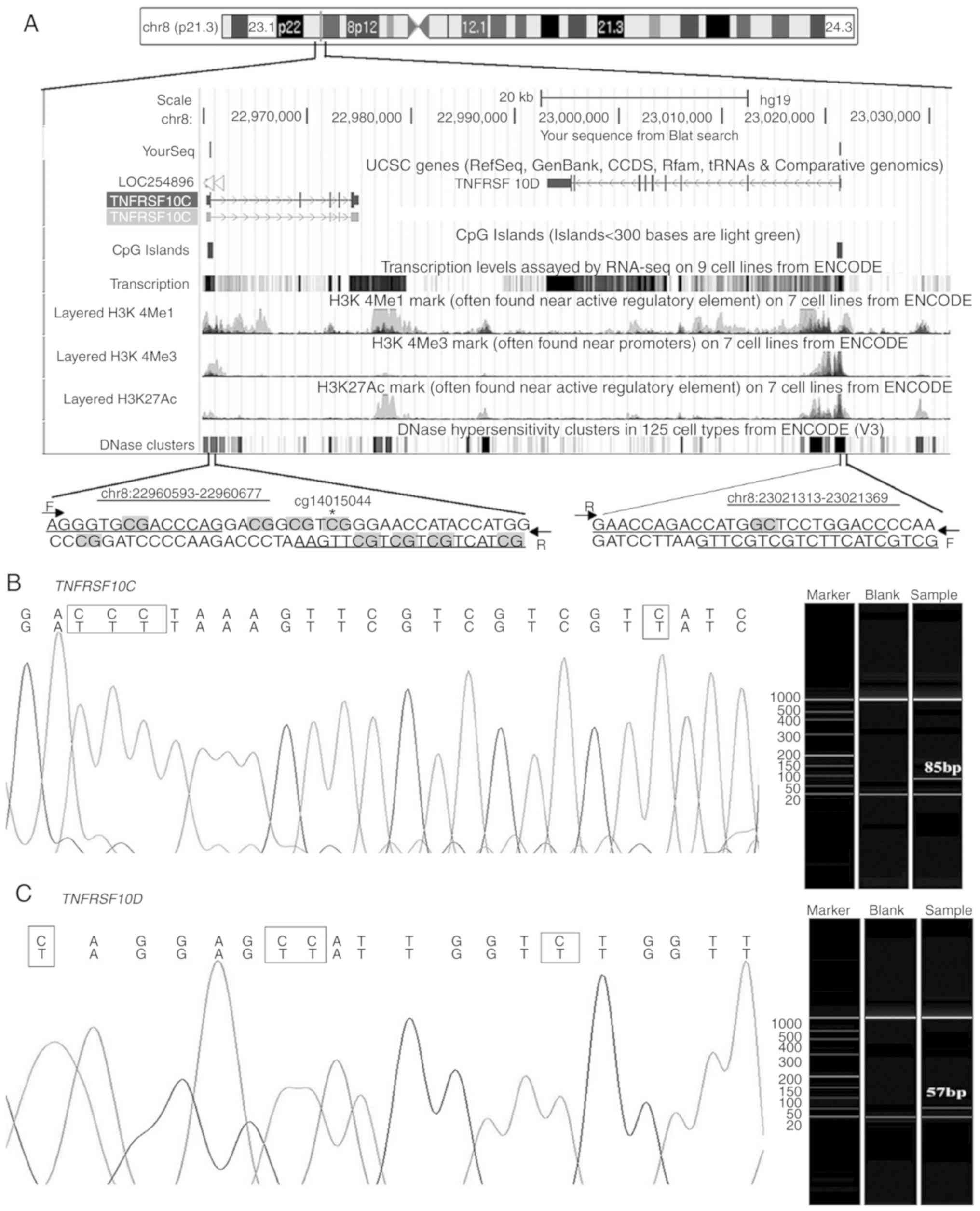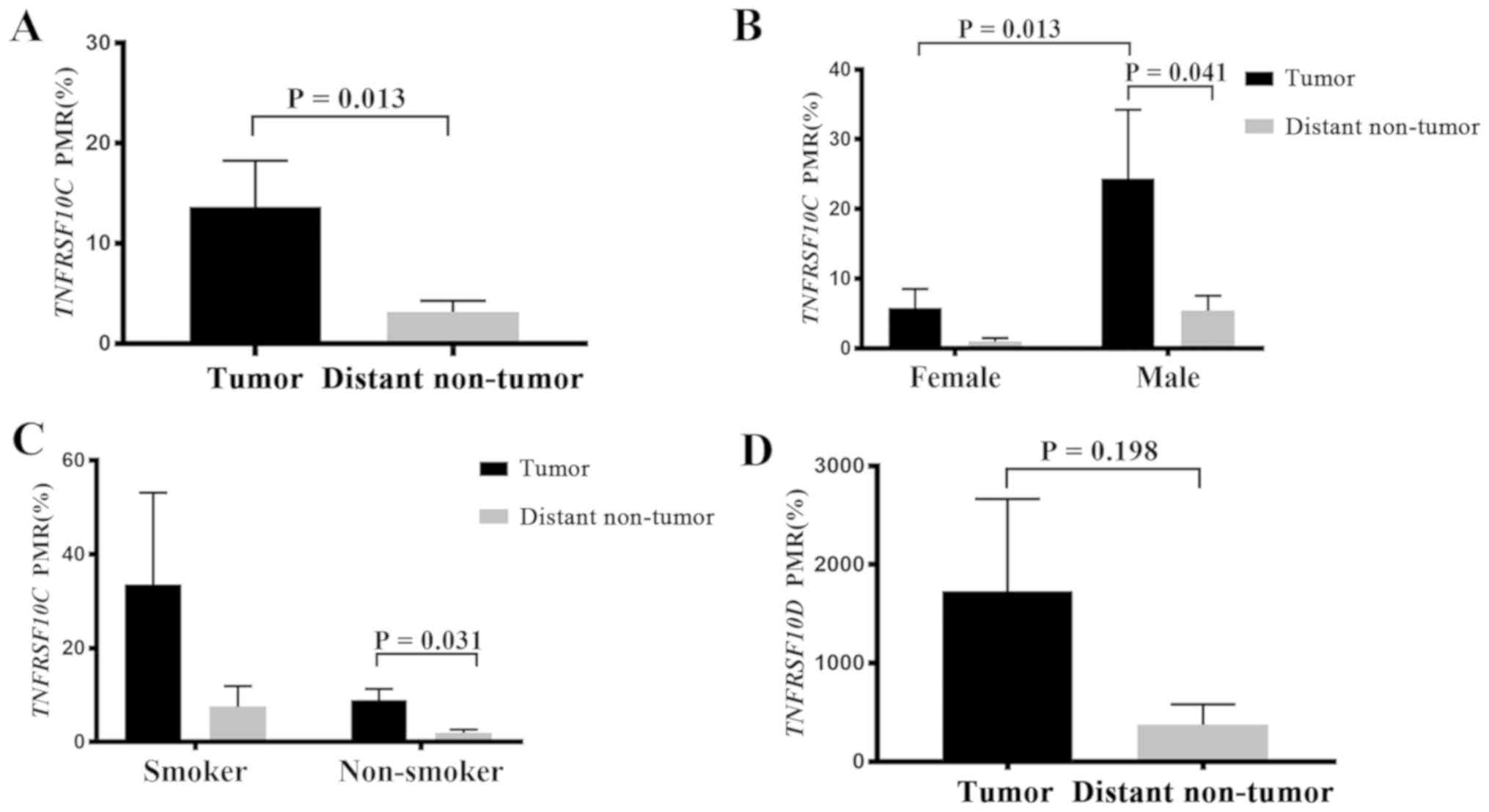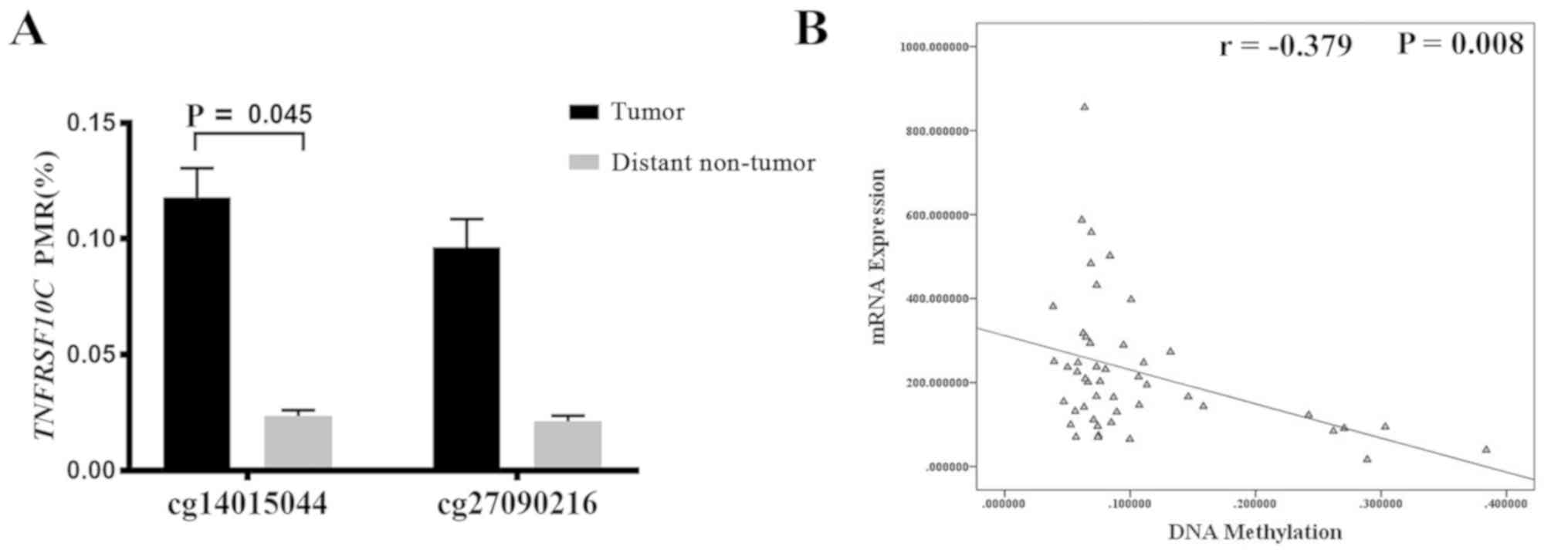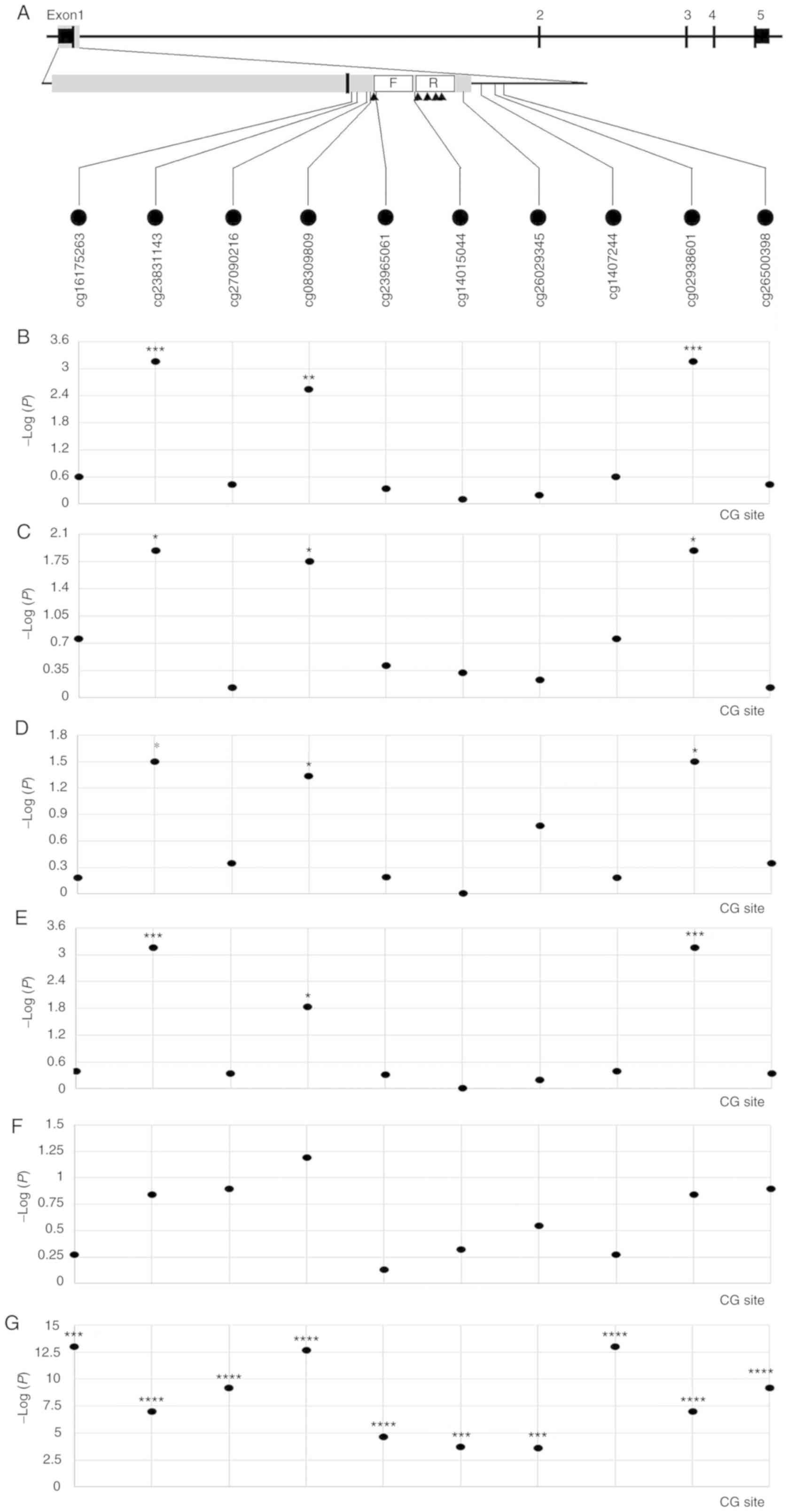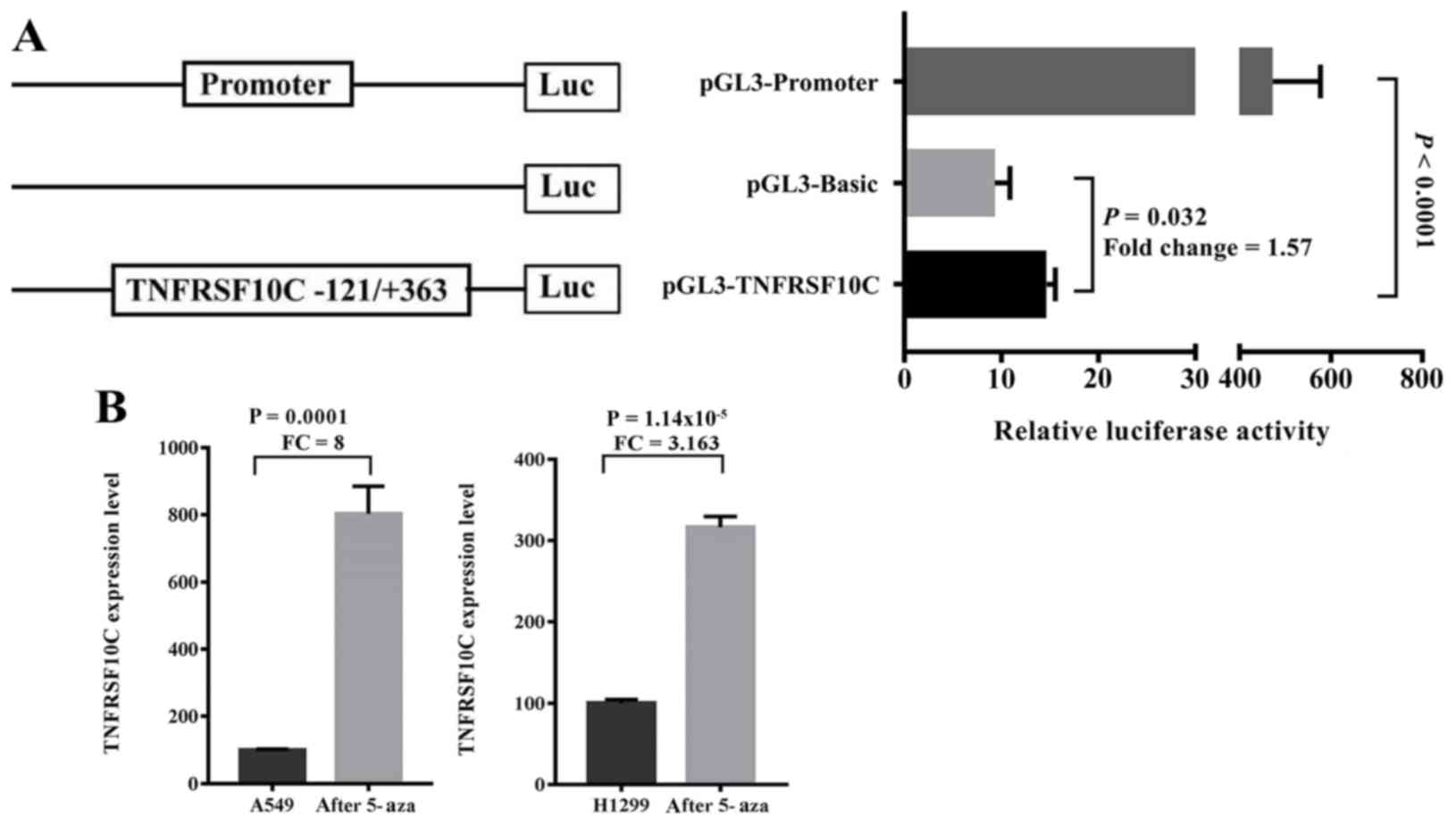|
1
|
Torre LA, Bray F, Siege RL, Ferlay J,
Lortet-Tieulent J and Jemal A: Global cancer statistics, 2012. CA
Cancer J Clin. 65:87–108. 2015. View Article : Google Scholar : PubMed/NCBI
|
|
2
|
Chen W, Zheng R, Baade PD, Zhang S, Zeng
H, Bray F, Jemal A, Yu XQ and He J: Cancer statistics in China,
2015. CA Cancer J Clin. 66:115–132. 2016. View Article : Google Scholar : PubMed/NCBI
|
|
3
|
Inage T, Nakajima T, Yoshino I and
Yasufuku K: Early lung cancer detection. Clin Chest Med. 39:45–55.
2018. View Article : Google Scholar : PubMed/NCBI
|
|
4
|
NSCLC Meta-analysis Collaborative Group, :
Preoperative chemotherapy for non-small-cell lung cancer: A
systematic review and meta-analysis of individual participant data.
Lancet. 383:1561–1571. 2014. View Article : Google Scholar : PubMed/NCBI
|
|
5
|
Le Chevalier T: Adjuvant chemotherapy for
resectable non-small-cell lung cancer: Where is it going? Ann
Oncol. 21 (Suppl 7):vii196–vii198. 2010. View Article : Google Scholar : PubMed/NCBI
|
|
6
|
Ji P, Ding D, Qin N, Wang C, Zhu M, Li Y,
Dai J, Jin G, Hu Z, Shen H, et al: Systematic analyses of genetic
variants in chromatin interaction regions identified four novel
lung cancer susceptibility loci. J Cancer. 11:1075–1081. 2020.
View Article : Google Scholar : PubMed/NCBI
|
|
7
|
Tang D, Zhao YC, Liu H, Luo S, Clarke JM,
Glass C, Su L, Shen S, Christiani DC, Gao W and Wei Q: Potentially
functional genetic variants in PLIN2, SULT2A1 and UGT1A9 genes of
the ketone pathway and survival of nonsmall cell lung cancer. Int J
Cancer. Feb 18–2020.(Epub ahead of print). View Article : Google Scholar
|
|
8
|
Jakopovic M, Thomas A, Balasubramaniam S,
Schrump D, Giaccone G and Bates SE: Targeting the epigenome in lung
cancer: Expanding approaches to epigenetic therapy. Front Oncol.
3:2612013. View Article : Google Scholar : PubMed/NCBI
|
|
9
|
Berger SL, Kouzarides T, Shiekhattar R and
Shilatifard A: An operational definition of epigenetics. Genes Dev.
23:781–783. 2009. View Article : Google Scholar : PubMed/NCBI
|
|
10
|
Rana AK and Ankri S: Reviving the RNA
world: An insight into the appearance of RNA Methyltransferases.
Front Genet. 7:992016. View Article : Google Scholar : PubMed/NCBI
|
|
11
|
Rauch T, Wang Z, Zhang X, Zhong X, Wu X,
Lau SK, Kernstine KH, Riggs AD and Pfeifer GP: Homeobox gene
methylation in lung cancer studied by genome-wide analysis with a
microarray-based methylated CpG island recovery assay. Proc Natl
Acad Sci USA. 104:5527–5532. 2007. View Article : Google Scholar : PubMed/NCBI
|
|
12
|
Castro M, Grau L, Puerta P, Gimenez L,
Venditti J, Quadrelli S and Sánchez-Carbayo M: Multiplexed
methylation profiles of tumor suppressor genes and clinical outcome
in lung cancer. J Transl Med. 8:862010. View Article : Google Scholar : PubMed/NCBI
|
|
13
|
Emery JG, McDonnell P, Burke MB, Deen KC,
Lyn S, Silverman C, Dul E, Appelbaum ER, Eichman C, DiPrinzio R, et
al: Osteoprotegerin is a receptor for the cytotoxic ligand TRAIL. J
Biol Chem. 273:14363–14367. 1998. View Article : Google Scholar : PubMed/NCBI
|
|
14
|
Allen JE, Krigsfeld G, Mayes PA, Patel L,
Dicker DT, Patel AS, Dolloff NG, Messaris E, Scata KA, Wang W, et
al: Dual inactivation of Akt and ERK by TIC10 signals Foxo3a
nuclear translocation, TRAIL gene induction, and potent antitumor
effects. Sci Transl Med. 5:171ra172013. View Article : Google Scholar : PubMed/NCBI
|
|
15
|
Dimberg LY, Anderson CK, Camidge R,
Behbakht K, Thorburn A and Ford HL: On the TRAIL to successful
cancer therapy? Predicting and counteracting resistance against
TRAIL-based therapeutics. Oncogene. 32:1341–1350. 2013. View Article : Google Scholar : PubMed/NCBI
|
|
16
|
Lim B, Allen JE, Prabhu VV, Talekar MK,
Finnberg NK and El-Deiry WS: Targeting TRAIL in the treatment of
cancer: New developments. Expert Opin Ther Targets. 19:1171–1185.
2015. View Article : Google Scholar : PubMed/NCBI
|
|
17
|
Soria JC, Smit E, Khayat D, Besse B, Yang
X, Hsu CP, Reese D, Wiezorek J and Blackhall F: Phase 1b study of
dulanermin (recombinant human Apo2L/TRAIL) in combination with
paclitaxel, carboplatin, and bevacizumab in patients with advanced
non-squamous non-small-cell lung cancer. J Clin Oncol.
28:1527–1533. 2010. View Article : Google Scholar : PubMed/NCBI
|
|
18
|
Wainberg ZA, Messersmith WA, Peddi PF,
Kapp AV, Ashkenazi A, Royer-Joo S, Portera CC and Kozloff MF: A
phase 1B study of dulanermin in combination with modified FOLFOX6
plus bevacizumab in patients with metastatic colorectal cancer.
Clin Colorectal Cancer. 12:248–254. 2013. View Article : Google Scholar : PubMed/NCBI
|
|
19
|
Cheah CY, Belada D, Fanale MA, Janikova A,
Czucman MS, Flinn IW, Kapp AV, Ashkenazi A, Kelley S, Bray GL, et
al: Dulanermin with rituximab in patients with relapsed indolent
B-cell lymphoma: An open-label phase 1b/2 randomised study. Lancet
Haematol. 2:e166–e174. 2015. View Article : Google Scholar : PubMed/NCBI
|
|
20
|
Herbst RS, Eckhardt SG, Kurzrock R,
Ebbinghaus S, O'Dwyer PJ, Gordon MS, Novotny W, Goldwasser MA,
Tohnya TM, Lum BL, et al: Phase I dose-escalation study of
recombinant human Apo2L/TRAIL, a dual proapoptotic receptor
agonist, in patients with advanced cancer. J Clin Oncol.
28:2839–2846. 2010. View Article : Google Scholar : PubMed/NCBI
|
|
21
|
Braithwaite AT, Marriott HM and Lawrie A:
Divergent roles for TRAIL in lung diseases. Front Med (Lausanne).
5:2122018. View Article : Google Scholar : PubMed/NCBI
|
|
22
|
Tessema M, Yu YY, Stidley CA, Machida EO,
Schuebel KE, Baylin SB and Belinsky SA: Concomitant promoter
methylation of multiple genes in lung adenocarcinomas from current,
former and never smokers. Carcinogenesis. 30:1132–1138. 2009.
View Article : Google Scholar : PubMed/NCBI
|
|
23
|
Raff T, van der Giet M, Endemann D,
Wiederholt T and Paul M: Design and testing of beta-actin primers
for RT-PCR that do not co-amplify processed pseudogenes.
Biotechniques. 23:456–460. 1997. View Article : Google Scholar : PubMed/NCBI
|
|
24
|
Kristensen LS, Mikeska T, Krypuy M and
Dobrovic A: Sensitive melting analysis after real time-methylation
specific PCR (SMART-MSP): High-throughput and probe-free
quantitative DNA methylation detection. Nucleic Acids Res.
36:e422008. View Article : Google Scholar : PubMed/NCBI
|
|
25
|
Livak KJ and Schmittgen TD: Analysis of
relative gene expression data using real-time quantitative PCR and
the 2(-Delta Delta C(T)) method. Methods. 25:402–408. 2001.
View Article : Google Scholar : PubMed/NCBI
|
|
26
|
Vaitkienė P, Skiriutė D, Skauminas K and
Tamašauskas A: GATA4 and DcR1 methylation in glioblastomas. Diagn
Pathol. 8:72013. View Article : Google Scholar : PubMed/NCBI
|
|
27
|
Cheng Y, Kim JW, Liu W, Dunn TA, Luo J,
Loza MJ, Kim ST, Zheng SL, Xu J, Isaacs WB and Chang BL: Genetic
and epigenetic inactivation of TNFRSF10C in human prostate cancer.
Prostate. 69:327–335. 2009. View Article : Google Scholar : PubMed/NCBI
|
|
28
|
Tserga A, Michalopoulos NV, Levidou G,
Korkolopoulou P, Zografos G, Patsouris E and Saetta AA: Association
of aberrant DNA methylation with clinicopathological features in
breast cancer. Oncol Rep. 27:1630–1638. 2012.PubMed/NCBI
|
|
29
|
Cai HH, Sun YM, Miao Y, Gao WT, Peng Q,
Yao J and Zhao HL: Aberrant methylation frequency of TNFRSF10C
promoter in pancreatic cancer cell lines. Hepatobiliary Pancreat
Dis Int. 10:95–100. 2011. View Article : Google Scholar : PubMed/NCBI
|
|
30
|
von Karstedt S, Montinaro A and Walczak H:
Exploring the TRAILs less travelled: TRAIL in cancer biology and
therapy. Nat Rev Cancer. 17:352–366. 2017. View Article : Google Scholar : PubMed/NCBI
|
|
31
|
Ishimura N, Isomoto H, Bronk SF and Gores
GJ: Trail induces cell migration and invasion in
apoptosis-resistant cholangiocarcinoma cells. Am J Physiol
Gastrointest Liver Physiol. 290:G129–G136. 2006. View Article : Google Scholar : PubMed/NCBI
|
|
32
|
Ehrhardt H, Fulda S, Schmid I, Hiscott J,
Debatin KM and Jeremias I: TRAIL induced survival and proliferation
in cancer cells resistant towards TRAIL-induced apoptosis mediated
by NF-kappaB. Oncogene. 22:3842–3852. 2003. View Article : Google Scholar : PubMed/NCBI
|
|
33
|
Vaz M, Hwang SY, Kagiampakis I, Phallen J,
Patil A, O'Hagan HM, Murphy L, Zahnow CA, Gabrielson E, Velculescu
VE, et al: Chronic cigarette smoke-induced epigenomic changes
precede sensitization of bronchial epithelial cells to single-step
transformation by KRAS mutations. Cancer Cell. 32:360–376.e6. 2017.
View Article : Google Scholar : PubMed/NCBI
|
|
34
|
von Karstedt S, Conti A, Nobis M,
Montinaro A, Hartwig T, Lemke J, Legler K, Annewanter F, Campbell
AD, Taraborrelli L, et al: Cancer cell-autonomous TRAIL-R signaling
promotes KRAS-driven cancer progression, invasion, and metastasis.
Cancer Cell. 27:561–573. 2015. View Article : Google Scholar : PubMed/NCBI
|
|
35
|
Chapman AM, Sun KY, Ruestow P, Cowan DM
and Madl AK: Lung cancer mutation profile of EGFR, ALK, and KRAS:
Meta-analysis and comparison of never and ever smokers. Lung
Cancer. 102:122–134. 2016. View Article : Google Scholar : PubMed/NCBI
|
|
36
|
Finnberg N, Klein-Szanto AJ and El-Deiry
WS: TRAIL-R deficiency in mice promotes susceptibility to chronic
inflammation and tumorigenesis. J Clin Invest. 118:111–123. 2008.
View Article : Google Scholar : PubMed/NCBI
|
|
37
|
Shivapurkar N, Toyooka S, Toyooka KO,
Reddy J, Miyajima K, Suzuki M, Shigematsu H, Takahashi T, Parikh G,
Pass HI, et al: Aberrant methylation of trail decoy receptor genes
is frequent in multiple tumor types. Int J Cancer. 109:786–792.
2004. View Article : Google Scholar : PubMed/NCBI
|
|
38
|
van Noesel MM, van Bezouw S, Salomons GS,
Voûte PA, Pieters R, Baylin SB, Herman JG and Versteeg R:
Tumor-specific down-regulation of the tumor necrosis factor-related
apoptosis-inducing ligand decoy receptors DcR1 and DcR2 is
associated with dense promoter hypermethylation. Cancer Res.
62:2157–2161. 2002.PubMed/NCBI
|
|
39
|
Pan G, Ni J, Yu G, Wei YF and Dixit VM:
TRUNDD, a new member of the TRAIL receptor family that antagonizes
TRAIL signalling. FEBS Lett. 424:41–45. 1998. View Article : Google Scholar : PubMed/NCBI
|
|
40
|
Diaz-Lagares A, Mendez-Gonzalez J, Hervas
D, Saigi M, Pajares MJ, Garcia D, Crujerias AB, Pio R, Montuenga
LM, Zulueta J, et al: A novel epigenetic signature for early
diagnosis in lung cancer. Clin Cancer Res. 22:3361–3371. 2016.
View Article : Google Scholar : PubMed/NCBI
|
|
41
|
Dong S, Li W, Wang L, Hu J, Song Y, Zhang
B, Ren X, Ji S, Li J, Xu P, et al: Histone-related genes are
hypermethylated in lung cancer and hypermethylated HIST1H4F could
serve as a pan-cancer biomarker. Cancer Res. 79:6101–6112. 2019.
View Article : Google Scholar : PubMed/NCBI
|
|
42
|
Constâncio V, Nunes SP, Henrique R and
Jerónimo C: DNA methylation-based testing in liquid biopsies as
detection and prognostic biomarkers for the four major cancer
types. Cells. 9(pii): E6242020. View Article : Google Scholar : PubMed/NCBI
|
|
43
|
Nunes SP, Diniz F, Moreira-Barbosa C,
Constâncio V, Silva AV, Oliveira J, Soares M, Paulino S, Cunha AL,
Rodrigues J, et al: Subtyping lung cancer using DNA methylation in
liquid biopsies. J Clin Med. 8(pii): E15002019. View Article : Google Scholar : PubMed/NCBI
|















